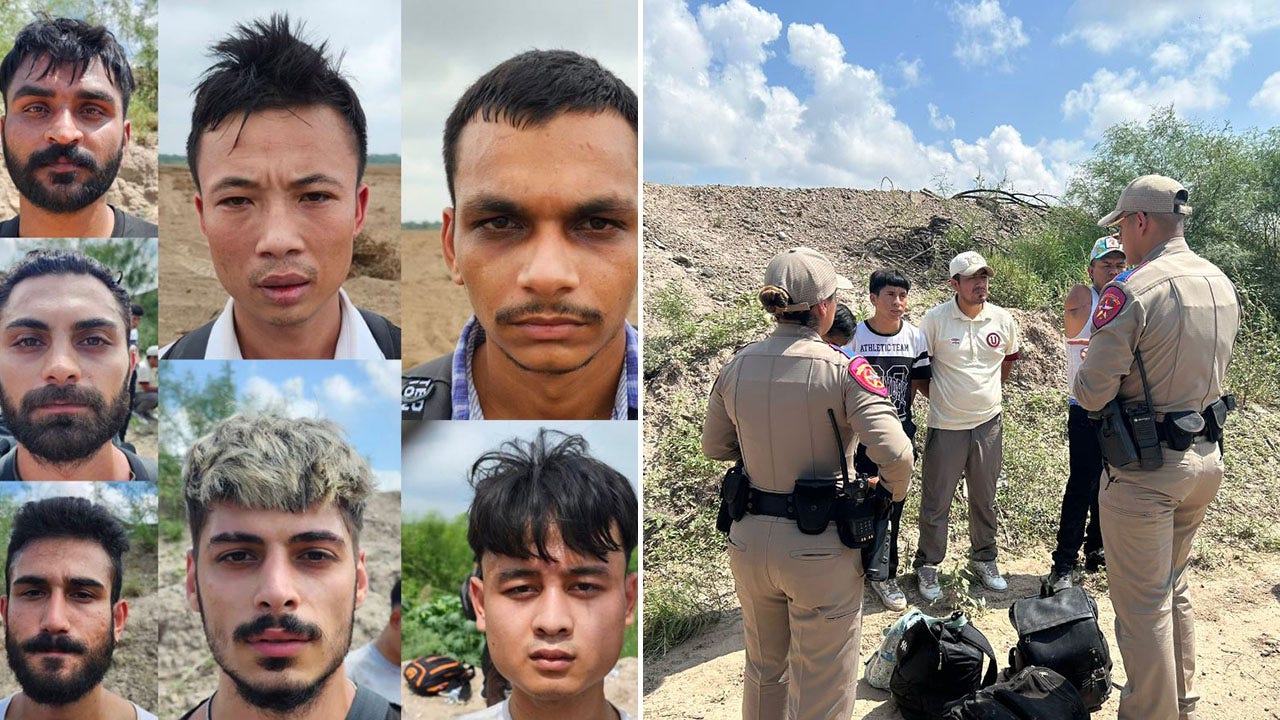Texas Troopers Encounter Illegal Immigrants from Diverse Nations Near Southern Border
On a recent Friday, Texas state troopers made a significant discovery near the southern border, intercepting a group of 36 illegal immigrants in the small town of Normandy. This encounter sheds light on the complex and often perilous journey many individuals risk in search of a better life in the United States.
A Diverse Group of Migrants
Among the 36 migrants apprehended were individuals from various countries, including Brazil, Peru, Ecuador, Nicaragua, the Dominican Republic, South Africa, and notably, Turkey. This group of Turkish nationals, who reported paying $12,000 each for their illegal crossing, sought to connect with a "sponsor" based in New Jersey. The high cost they incurred illustrates the lengths some are willing to go, as well as the complexities of human smuggling networks that operate across borders.
Legal Consequences for Some
The Texas Department of Public Safety (DPS) confirmed that 15 of these migrants were arrested on suspicion of criminal trespass. This enforcement action underscores the legal ramifications that come with entering the U.S. without authorization. Although many individuals come seeking refuge or better economic opportunities, the law treats illegal entry as a criminal offense which may lead to detention or deportation.
Special Interest Migrants: A Concern for National Security
Among the apprehended were "special interest" migrants, a designation used by the Department of Homeland Security (DHS) to categorize non-U.S. citizens whose travel patterns may indicate potential national security risks. While the label does not imply that these individuals are terrorists, it suggests their behavior prompts further scrutiny as authorities assess the potential risks they might pose.
The Turkish Network and Social Media Connections
In a fascinating twist, one 26-year-old migrant from Turkey detailed how he and his compatriots utilized social media platforms like Telegram and Instagram to connect with a network facilitating their illegal entry into the U.S. He described the presence of a "sponsor" in New Jersey who purportedly promised to cover their expenses while they navigated the legal processes in the country. His account, captured on body camera footage by DPS, reflects the modern methods utilized by migrants and those who assist them, often relying on digital communication to coordinate their perilous journeys.
Increased Patrols and Ongoing Challenges
The recent encounters are part of a larger trend observed by Texas DPS. In fact, Lieutenant Chris Olivarez of the DPS reported that in a span of just 48 hours, troopers had also come across eight special interest immigrants from five different countries in the same rural area surrounding Normandy. This increasing number of apprehensions highlights the ongoing challenges that law enforcement faces along the southern border and points to a growing complexity in migration patterns.
Cooperation with Border Patrol
Following the initial apprehensions made by state troopers, 21 of the migrants were transferred to U.S. Border Patrol for further processing. This collaboration between state-level enforcement and federal authorities is crucial in managing the ongoing influx of migrants at the southern border. The transfer ensures that each case is properly evaluated, with appropriate measures taken based on immigration laws.
Conclusion and Ongoing Surveillance
As Texas state troopers continue to encounter illegal immigrants from various parts of the world, the situation at the border remains dynamic and multifaceted. Both the state’s law enforcement agencies and the federal government are tasked with navigating the complexities of immigration policy, enforcing existing laws, and balancing humanitarian considerations. The recent surge of encounters not only highlights the need for effective border security measures but also raises critical questions about the broader implications of global migration trends in the 21st century.
